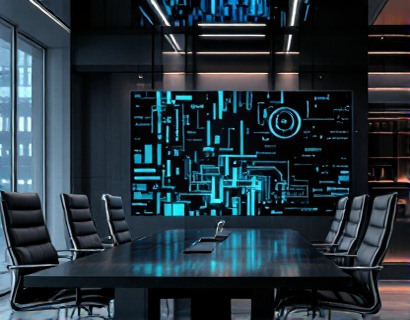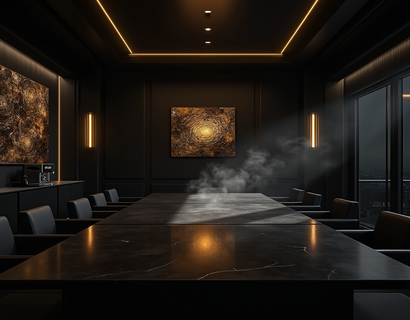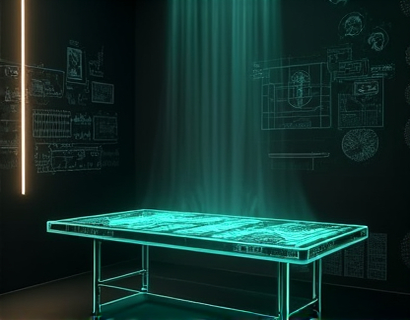Maximizing Architecture Firm Efficiency with Advanced Software Solutions
In the competitive landscape of architecture firms, efficiency and productivity are paramount. Advanced software solutions play a crucial role in streamlining internal processes and enhancing user experience, allowing architects to concentrate on their creative excellence. This article delves into the various ways technology can optimize project management, resource allocation, and client interactions, ultimately leading to improved overall performance and collaboration within architecture firms.
Streamlining Project Management
Effective project management is the backbone of any successful architecture firm. Advanced software solutions offer robust tools that simplify the planning, execution, and monitoring of projects. These platforms provide centralized dashboards where team members can track progress, manage timelines, and allocate resources with precision. By automating routine tasks such as scheduling and reporting, these tools reduce the likelihood of human error and free up valuable time for more strategic activities.
One key feature of these software solutions is the ability to integrate with other tools and systems used within the firm. For instance, seamless integration with CAD software, BIM tools, and ERP systems ensures a smooth workflow, minimizing the need for manual data entry and synchronization. This integration not only saves time but also ensures data consistency and accuracy across all stages of the project lifecycle.
Enhancing Resource Allocation
Optimizing resource allocation is critical for maintaining project timelines and budgets. Advanced software solutions provide sophisticated resource management capabilities that help firms allocate human and material resources more effectively. These tools allow managers to visualize resource availability, track utilization, and make informed decisions about staffing and equipment assignments.
For example, some software platforms offer predictive analytics that forecast resource needs based on historical data and current project requirements. This proactive approach helps firms avoid overstaffing or understaffing, ensuring that resources are used efficiently and costs are kept under control. Additionally, these tools can help identify skill gaps within the team, facilitating targeted training and development programs.
Improving Client Interactions
Client satisfaction is a key driver of success for architecture firms. Advanced software solutions enhance client interactions by providing secure, user-friendly portals for project access and communication. These portals enable clients to view project progress, upload files, and communicate with the design team in real-time. This level of transparency and engagement fosters trust and ensures that clients feel involved throughout the project lifecycle.
Moreover, these platforms often include features for collecting and managing client feedback, which can be invaluable for continuous improvement. By analyzing client input, firms can identify areas for enhancement and tailor their services to better meet client needs. This data-driven approach not only improves client satisfaction but also helps build long-term relationships and repeat business.
Boosting Collaboration and Communication
Collaboration is essential in architecture, where multiple stakeholders, including clients, engineers, contractors, and team members, need to work together seamlessly. Advanced software solutions facilitate collaboration by providing shared workspaces and communication tools. These platforms support real-time document editing, version control, and commenting, ensuring that all team members are on the same page and working with the most up-to-date information.
Furthermore, these tools often include features for task assignment and tracking, which help keep everyone accountable and focused on their responsibilities. By centralizing communication and collaboration, firms can reduce misunderstandings and delays, leading to more efficient project delivery.
Enhancing User Experience
The user experience of software solutions is crucial for adoption and effectiveness. A well-designed interface that is intuitive and easy to navigate can significantly improve productivity. Advanced software solutions are developed with user experience in mind, incorporating feedback from architects and other stakeholders to create interfaces that are both functional and user-friendly.
These platforms often offer customizable dashboards and workflows, allowing firms to tailor the software to their specific needs and preferences. Additionally, comprehensive training and support resources ensure that users can maximize the benefits of the software without facing unnecessary learning curves.
Case Studies and Success Stories
Several architecture firms have successfully implemented advanced software solutions, resulting in significant improvements in efficiency and productivity. For instance, a mid-sized firm in New York reported a 30% reduction in project delivery time after adopting a comprehensive project management tool. The firm attributed this improvement to better resource allocation and streamlined communication processes.
Another firm based in San Francisco leveraged a client portal to enhance transparency and engagement. Client satisfaction scores increased by 25% within six months of implementation, leading to a surge in new business and repeat orders. These success stories highlight the tangible benefits of investing in advanced software solutions for architecture firms.
Future Trends and Innovations
The architecture software landscape is continually evolving, with new technologies and innovations on the horizon. One emerging trend is the integration of artificial intelligence (AI) and machine learning (ML) into software solutions. AI can automate complex tasks such as design optimization, cost estimation, and risk assessment, further enhancing efficiency and accuracy.
Another area of growth is the use of virtual and augmented reality (VR/AR) in the design and presentation process. These technologies allow clients to experience designs in a more immersive and realistic way, leading to better decision-making and reduced revisions. As these technologies mature, they are likely to become integral components of advanced software solutions for architecture firms.
Conclusion
In conclusion, advanced software solutions offer architecture firms a powerful means to maximize efficiency, streamline processes, and enhance user experience. By leveraging these tools, firms can focus more on creative excellence while ensuring project success and client satisfaction. As technology continues to advance, the potential for further improvements in productivity and collaboration is vast, making it an exciting time for architecture professionals to embrace these innovations.










































